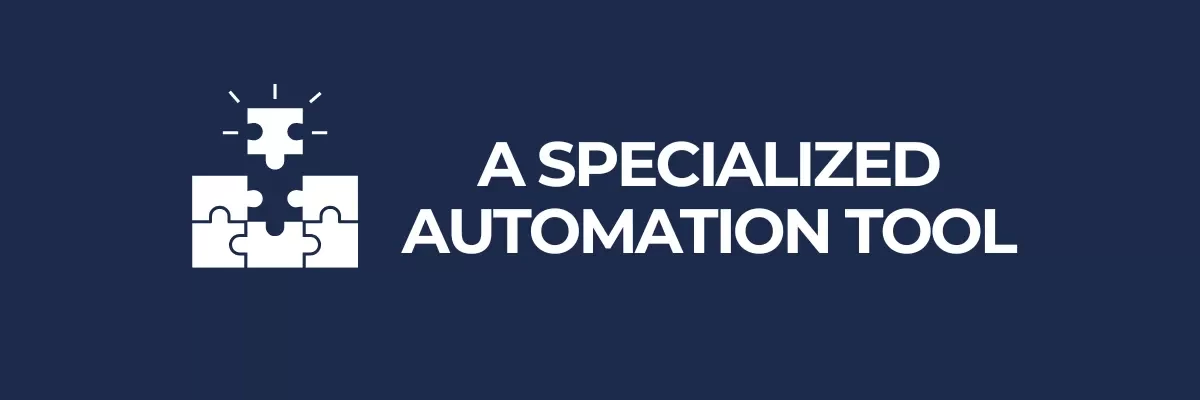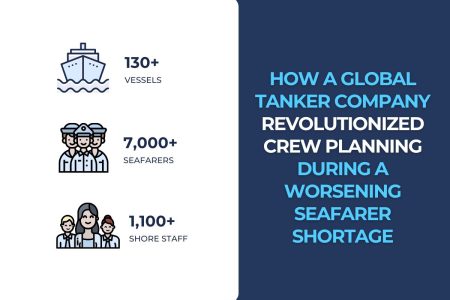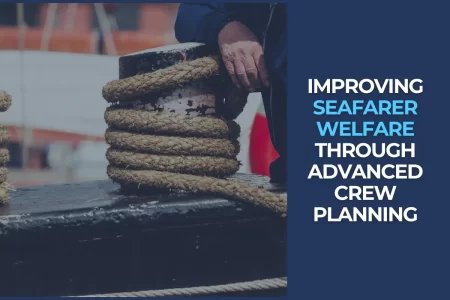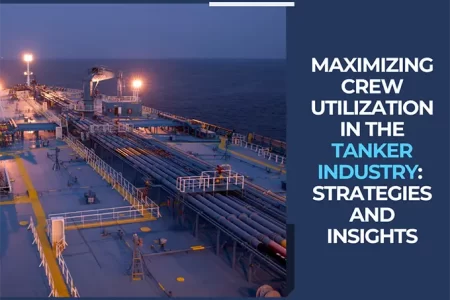In the maritime industry, efficient crew planning is essential for smooth operations and seafarers’ well-being. However, the tools used to manage crew can vary significantly in their approach and effectiveness. This blog post will explore the differences between a typical Crew Management System (CMS) and the Konsius Crew Planner, highlighting why a specialized automation tool like Konsius might be the game-changer your company needs.
Adopting a microservice like the Konsius Crew Planner alongside your existing Crew Management System (CMS) offers significant benefits. Microservices can be seamlessly integrated into existing systems, enhancing specific functions without major disruptions to the entire system and company. This leads to improved operational efficiency as Konsius Crew Planner automates crew planning, reduces manual workload, and allows managers to focus on more critical tasks.
An All-in-One Solution vs. Specialized Automation Tool
Crew Management System (CMS)
A Crew Management System (CMS) is designed as an all-in-one solution, offering a wide range of functions to manage various aspects of crew logistics. These functions typically include:
- Storing Crew Data and Documentation: CMS platforms maintain detailed records of each crew member’s personal information, qualifications, certificates, work history, and more. This comprehensive database is essential for ensuring that crew members are suitably qualified and available for assignments.
- Managing Certifications and Compliance: CMS systems ensure that all crew members have the necessary certifications and that these certifications are up to date. They also help manage compliance with international maritime regulations, reducing the risk of non-compliance penalties.
- Handling Payroll: Many of these systems can manage the complex payroll processes associated with maritime operations, including various currencies, tax regulations, and payment schedules. This function ensures that crew members are paid accurately and on time.
- Conducting Administrative Tasks: CMS platforms streamline various administrative tasks, such as contract management, leave scheduling, travel arrangements, and performance evaluations. This reduces the administrative burden on HR departments and ensures smooth operation.
- Training Scheduling: A training module is common in Crew Management software as well. This is used to plan necessary future training for seafarers, manage course schedules, handle course signups and attendance, and manage course certifications. Additionally, many systems integrate and share data and documents with external specialized training systems.
- Crew Planning: In a typical CMS, the crew planning process is often manual. Managers must find seafarers one by one, assign positions, and determine assignment lengths. This involves reviewing numerous factors such as availability, qualifications, vessel schedules, and preferences, among others. The manual nature of this process can be time-consuming and prone to errors, impacting operational efficiency and crew satisfaction. Managers often spend hours or even days creating plans, which can then change at any time due to last-minute and unexpected developments, leading to significant disruptions.
Konsius Crew Planner

In contrast, the Konsius Crew Planner is a specialized microservice focused solely on automating crew planning. Unlike the manual methods used in a typical CMS, the Konsius Crew Planner automates the entire planning process.
Here’s how it’s different:
- Advanced Algorithms: The most important feature of the Konsius Crew Planner is its algorithm. It uses sophisticated algorithms to create assignments for all vessels and seafarers at once. It starts by calculating the best possible crew assignments, considering both hard rules, such as certifications and regulations, and soft rules, like personal preferences and past experiences. This ensures that every plan meets compliance requirements and aligns with the needs of both the crew and the company.
- Assignments and Approval Workflow: Once the rules are set in the algorithm, the Konsius Crew Planner creates a detailed plan. Managers can then view all assignments across vessels in a visual planner or one by one in more detail. By selecting one plan, comprehensive information about the plan is presented, including start and end dates, length of assignments, matching criteria according to the rules set, vessel and crew information, and a visual planner that shows who the crew member will work with. From there, the crew planner needs to evaluate each plan and go through the assignment workflow to either reject or approve the plan.
- Know Sign-Off and Joining Dates: Typically, seafarers receive their plans just three days before their next assignment. The Konsius Crew Planner changes this. The aim is that while they are still onboard, a seafarer will know their sign-off date and their next joining date, and who will relieve them. This means that whether a crew member is finishing their current voyage or resting at home, they are already informed of their next assignment well in advance and can properly plan their time at home before joining the vessel again.
- Plan 12 Months Ahead: The Konsius Crew Planner’s ability to plan at least 12 months (or more) into the future allows for greater foresight in recruitment, career planning, and promotions. While plans may change due to unforeseen circumstances like illness or resignation, the system will simply replan, considering the new changes while minimizing the effect on existing plans. This provides a robust framework for long-term planning and is significantly better than the uncertainty of no plan at all.
- Integration with Current CMS System: For the Konsius Crew Planner to work well, it needs data. That’s why an integral part of using Konsius is integrating with your existing Crew Management Software to easily import the data you already have, rather than reinventing the wheel in Konsius. This avoids double entry of data and ensures that Konsius uses the latest and most updated information and schedules that you already have in place.
A Closer Look at Microservices and Their Benefits

Adopting a microservice like the Konsius Crew Planner alongside your existing Crew Management System (CMS) offers significant benefits. Microservices can be seamlessly integrated into existing systems, enhancing specific functions without major disruptions to the entire system and company. This leads to improved operational efficiency as Konsius Crew Planner automates crew planning, reduces manual workload, and allows managers to focus on more critical tasks. The result is a streamlined, more effective operation that optimizes crew assignments while maintaining flexibility and scalability.
Benefits of Konsius Crew Planner
Efficient Planning
Konsius Crew Planner’s automated approach streamlines crew planning by using advanced algorithms to handle the entire process. Imagine a scenario where a manager typically spends hours each day manually assigning seafarers to various positions on multiple vessels. With Konsius, those hours are reduced to mere minutes. The system considers factors like regulations, individual preferences, and vessel requirements, ensuring optimal assignments. This efficiency allows managers to focus on more strategic tasks, such as improving crew satisfaction, career development, and operational strategies, ultimately boosting overall productivity.
Improved OPEX Control
The ability to set and adjust strategic priorities easily is a key feature of Konsius Crew Planner, leading to better OPEX control. By optimizing at the fleet level rather than focusing on individual vessels, the system enhances overall operational efficiency. Increased transparency within the system further aids in better OPEX management, allowing for more informed decision-making and resource allocation. This approach ensures that financial resources are utilized effectively, contributing to the stability and success of maritime operations.
Better Crew Welfare
Konsius Crew Planner significantly enhances crew welfare by making the planning process more predictable and considerate of individual needs and preferences. The system aligns crew assignments with personal and professional goals, promoting career development by allowing crew members to strengthen their skills at a comfortable pace. Additionally, a longer planning horizon provides stability and predictability, ensuring crew members are relieved on time and reducing stress. This results in a more satisfied and motivated workforce.
Seamless Integration

One of the major advantages of microservices is their ability to integrate seamlessly with existing systems. Microservices can function independently while enhancing the capabilities of current systems through well-defined APIs. This means that shipping companies can enjoy the benefits of advanced crew planning automation without the need for a complete system overhaul. The smooth communication and data exchange facilitated by microservices result in a more streamlined and effective operation.
Could this be a solution for your company?
If the benefits of the Konsius Crew Planner sound like a solution for your company, we invite you to take the next step. We offer a free consultation to evaluate if the Konsius Crew Planner is right for your needs.
Find a time here that suits you or fill out our contact form and we will get in touch with you.



